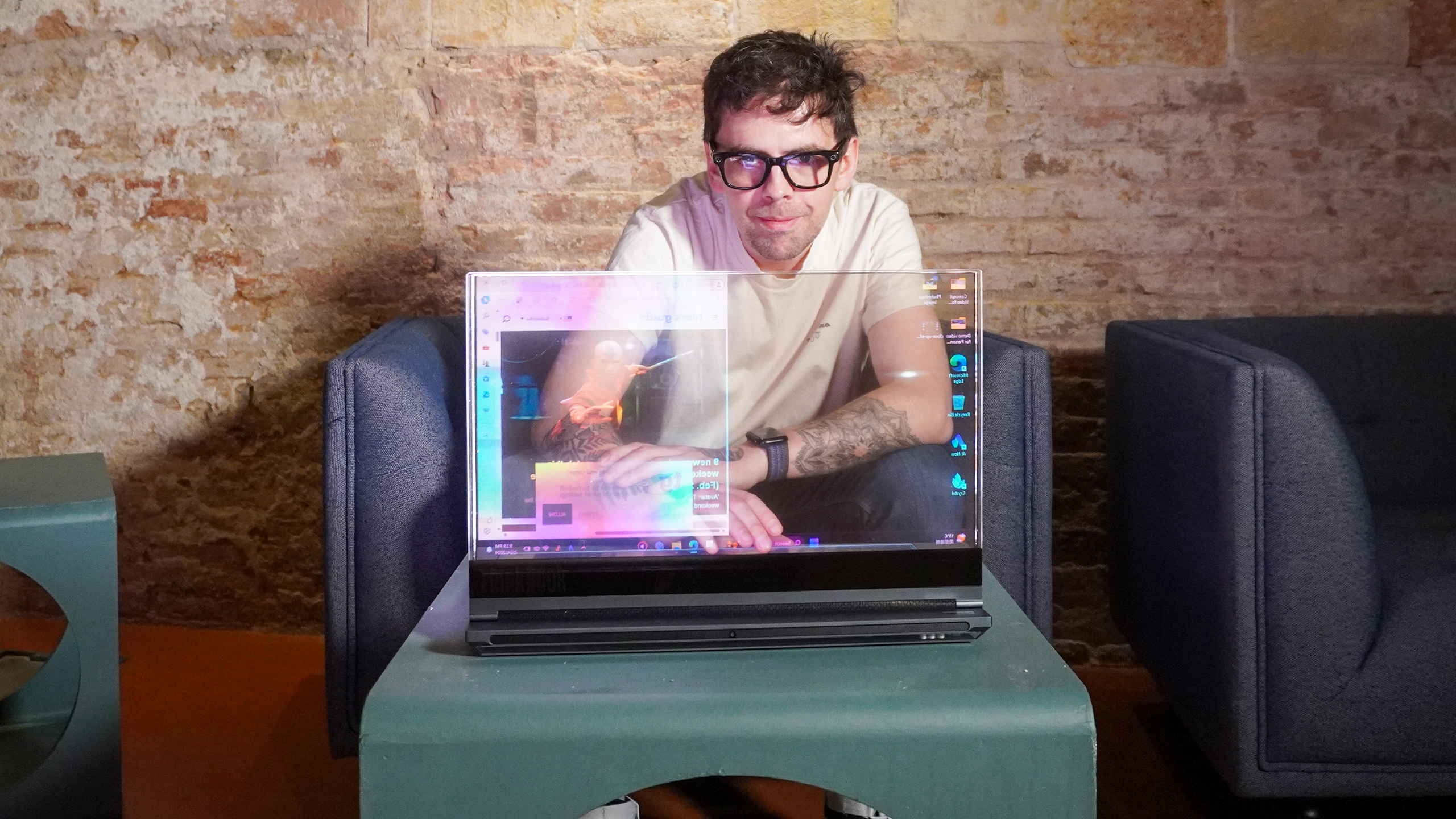
The Lenovo ThinkBook Transparent Display Laptop Concept has a vision for the future as ambitious as its name is long. But after going hands-on with it at MWC 2024, I’m left with one big question: how would this actually be useful?
Don’t get me wrong, the 17.3-inch mini LED display being see-through is insanely cool. It certainly felt futuristic to be able to see the world behind the panel, and also see the screen’s content from behind the laptop itself. But then you start to think about the real-world use cases for something like this, and I’m bamboozled.
Lenovo did try to clear this up a little bit with some cool ideas, such as being able to see ingredients behind your laptop while looking at a recipe on the display, or a new type of augmented computing that integrates the real-world location and real objects behind it.
Lenovo ThinkBook Transparent Display Laptop concept: The cool bits
Of course, this is a prototype, so there are some real concerns raised about this vision of the future. But I can’t deny one crucial thing: this thing is so damn cool.
You can see right through it
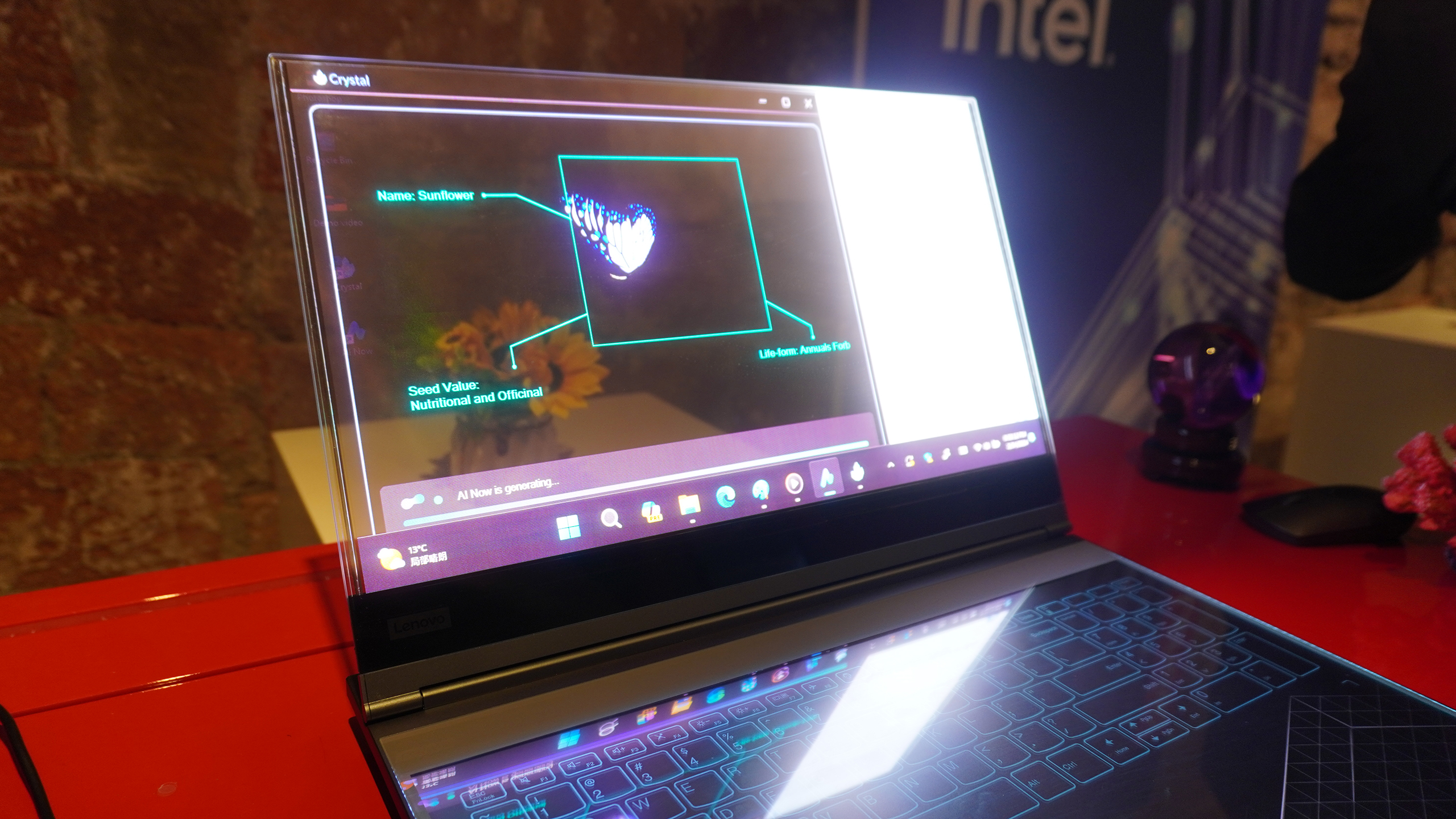
I mean, do I need to say anything more than that? You can see right through the Lenovo ThinkBook transparent display, just like I did in my hands-on time and my mind was racing with possibilities. What you have up top is a 17.3-inch Mini LED display, with a 720p resolution and 120Hz refresh rate.
Those numbers lead to a rather pixellated experience, but of course, this is a laptop industry-first — completely removing the back panel and allowing you to see right through the screen.
Even better, you’re not sacrificing any of that color saturation, contrast or (most importantly) brightness, as the picture is vivid and packs a max brightness of 1,000 nits. During my hands-on time, I got a little annoyed at how hard it was to photograph a laptop screen this bright, but that’s more of my own problem and something that fixes what could’ve been a key problem in visibility.
What this translates to is a picture you can see clearly no matter how challenging the lighting conditions behind the screen. Plus, it’s going to take a long time for me to get over the wow factor of playing with this ThinkBook — all of the sex appeal of LG’s transparent OLED TV with serious Minority Report vibes and futuristic usability.
Could be actually useful (in some cases)
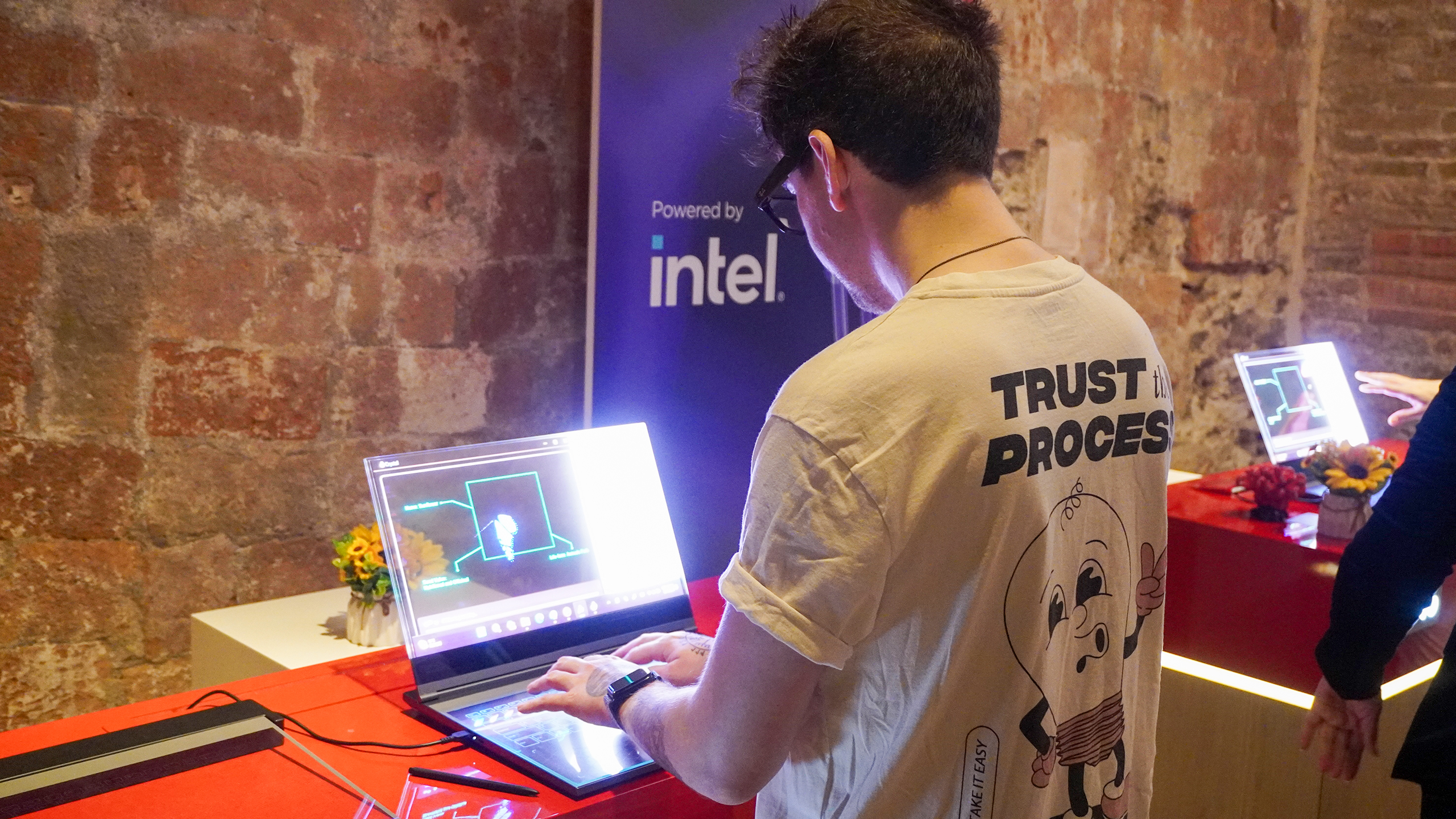
I was left looking at this concept with dreamy eyes of how cool this machine looks, but I still had one burning question: what is this actually useful for? Luckily, Lenovo had some ideas.
Namely, outside of the kitchen scenario mentioned above, it comes down to AI driving a different kind of augmented computing. As the device will have more smarts to it in the form of being able to be cognizant of its location and objects placed in front of it, you could see some interesting potential use cases.
We're talking about capabilities such as identifying objects, finding out more information about them, presenting an AR interface around them, and being able to copy and paste the image into a photo editing suite to tweak. There is also the increased social nature of this kind of computing, too — group projects can be seen on both sides of the display now, and there is no longer the signal of isolating yourself from a conversation with the opaque back of a laptop display.
This prototype does exactly what any good concept does, in that it raises interesting questions for us to answer.
Lenovo ThinkBook Transparent Display Laptop concept: The “huh?” bits
However, that doesn’t mean the answers are going to be good. As cool as the ThinkBook Transparent Display concept is, I do have some worries about this idea of the future.
Are these use cases enough?

AR is a great technology, but only in certain categories. Spatial computing in Apple Vision Pro is a defining example of it in the headset space, and when it comes to on-the-go, your smartphone is the perfect vessel for it — Google Maps Live View is one of the better implementations of it.
But in a laptop? I’m not so sure. Forgive me for sounding quite traditional, but the windowed multitasking interface of a computer OS has been honed for decades to become a sleek interface for getting stuff done. AR brings a new kind of interactivity to this system, and the ideas for this transparent display can be accused of sounding a little gimmicky.
Privacy? What privacy?
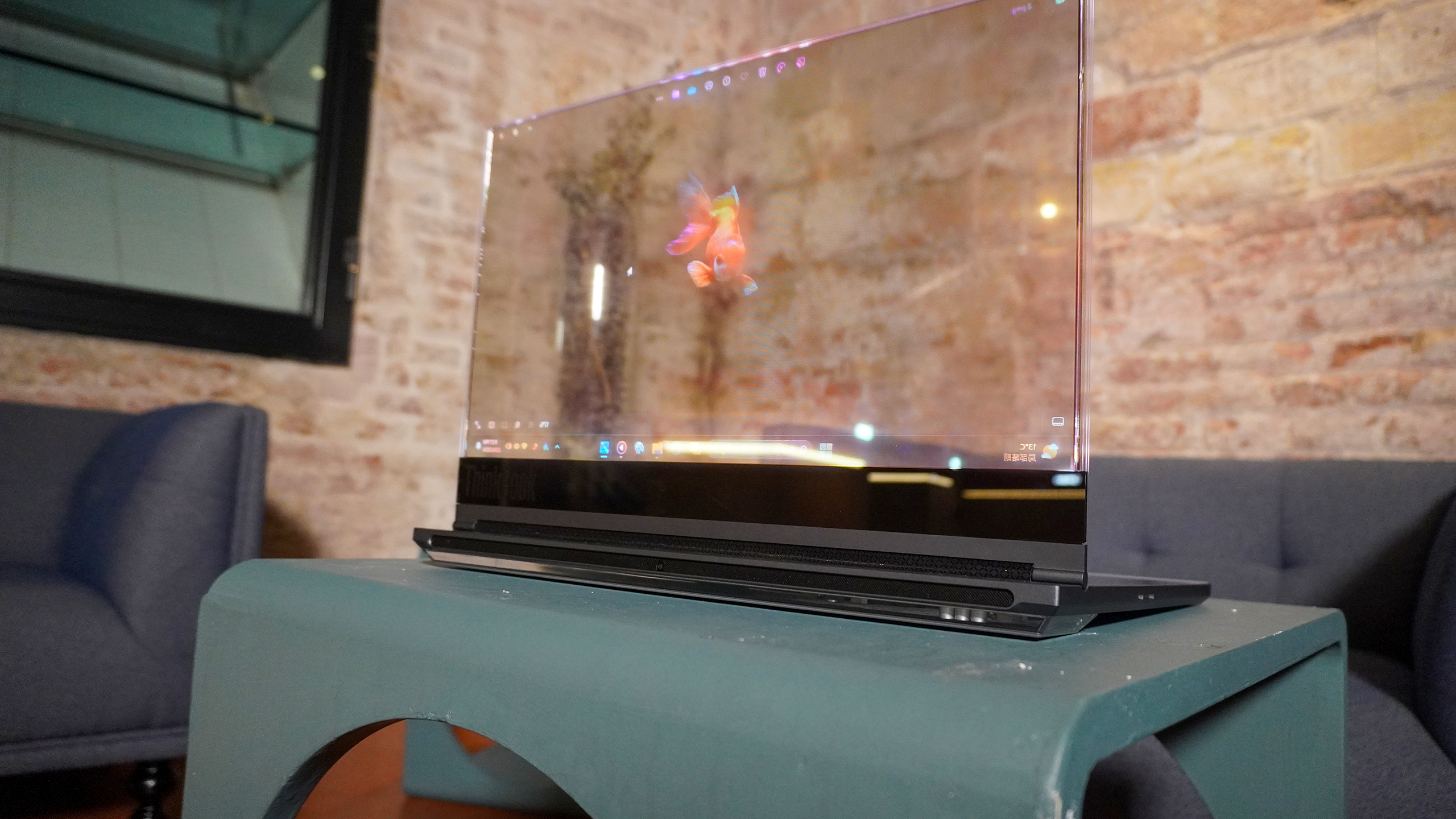
Say you’re working on a sensitive presentation, or you’re a writer (like me) with embargoed information on your laptop display. Snoopers can get more than a good look at what you’re looking at on the other side of this screen.
I appreciate it’s a good social tool for group working, but it’s also quite the privacy scare when you really think about it. Luckily, Lenovo has already thought about this, and if the laptop did ever come to market, a polarizing layer would be placed on the back — kind of like the electrochomic lenses in the Xreal Air 2 Ultra.
Give me a proper keyboard, please!
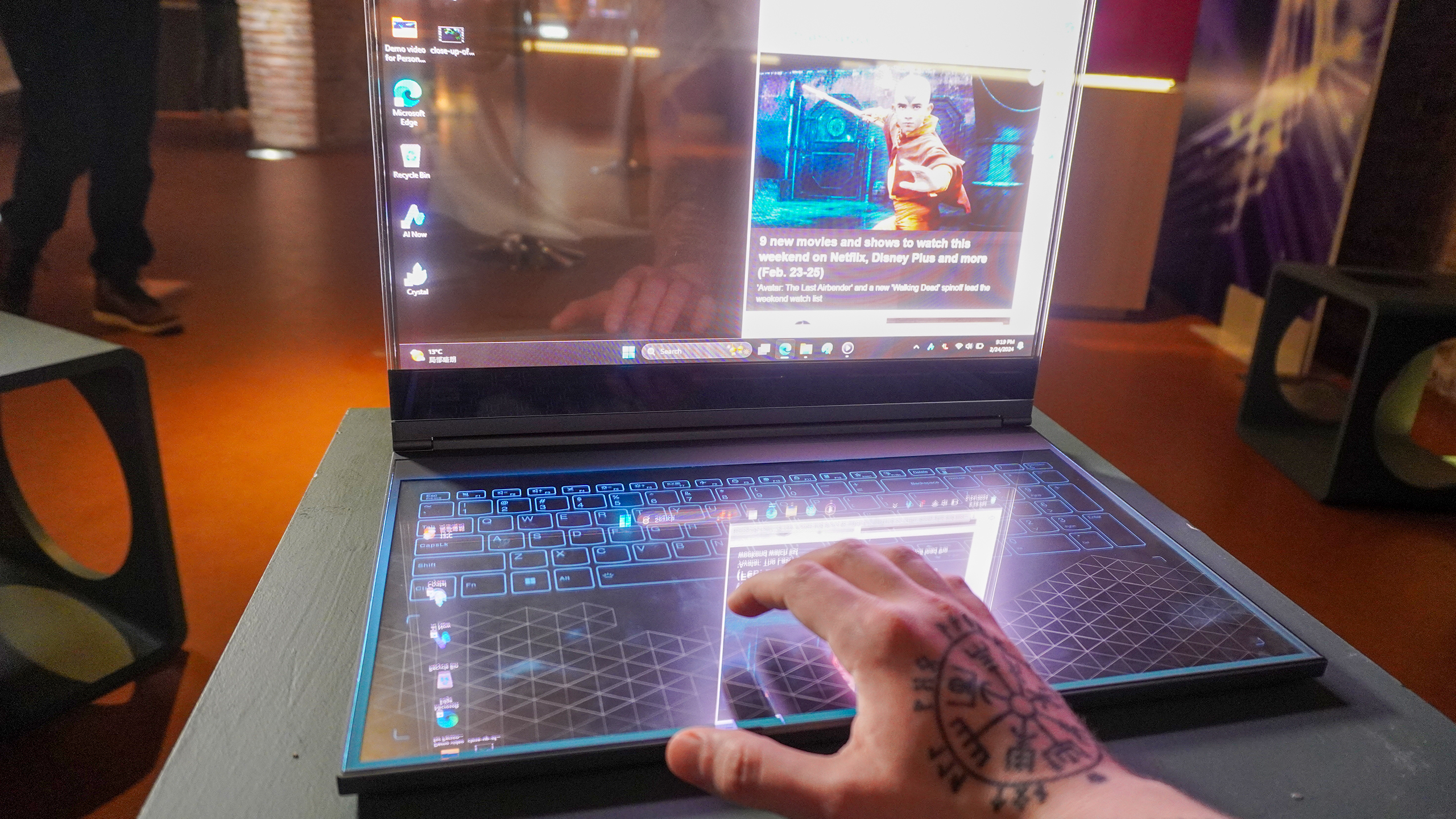
Finally, this is more of a personal gripe, but in the on-screen vs. physical keyboard battle in the laptop space, the latter is always going to be a very clear winner. I get the versatility of a screenboard, as Lenovo shows off on the ThinkBook Transparent Display Laptop concept by offering both the traditional typing/clicking experience and a pen interface for designers.But I managed just under 25 words-per-minute in testing the on-screen keyboard (and that was with plenty of mistakes). It made me really miss that tactile feel of a key.
I get that for this concept, Lenovo wanted to pull out all the stops with a futuristic piece of kit, but if something like this does get the green light, I beg of you, Lenovo, to give me a proper keyboard.
Lenovo ThinkBook Transparent Display Laptop concept: Outlook
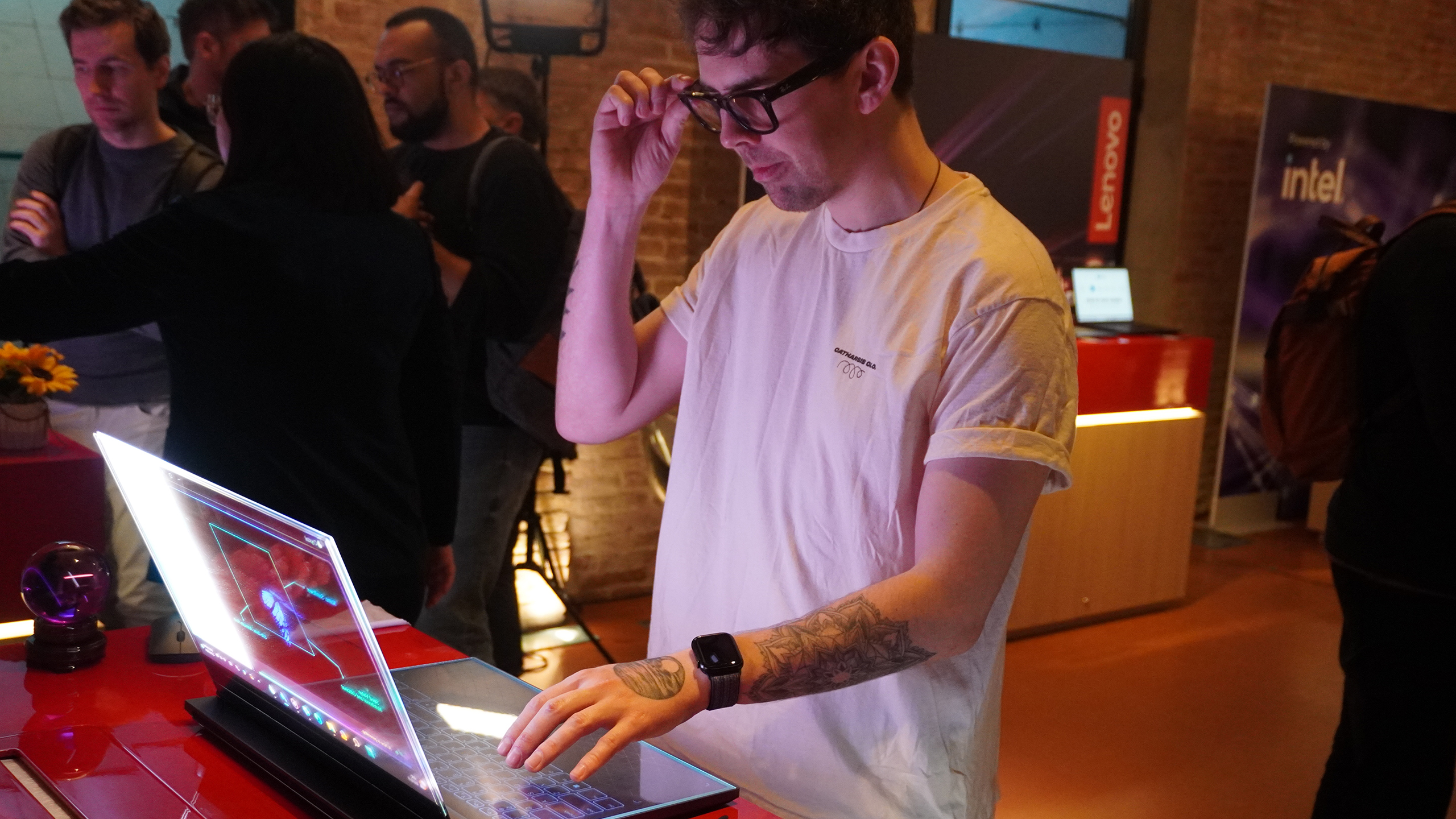
I must remind you that this is just a concept — a prototype that is a little rough around the edges when it comes to the build of it. The 720p resolution is blurry, the transparency can be a bit of a privacy nightmare, and the ideas on how this will bring more usability over a traditional opaque back raised more questions than answers.
But I can’t deny how cool this idea is, as it brings an AI-inspired alternative spin on what you think of a laptop while injecting some real sci-fi sexiness into the proceedings here at MWC. Lenovo is shooting its shot at the future, and I’m excited to see where the company takes this.







